BEES, WASPS, AND HORNETS
Bee! How do you react when someone cries bee!
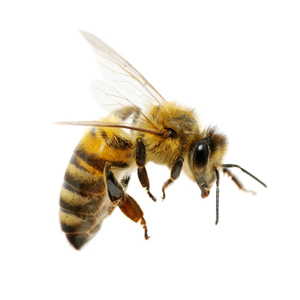
An intrusion of bees, wasps, and hornets isn’t always welcome. It can even be unnerving. These little pests can pack a powerful sting, which is particularly dangerous to those with allergies—especially children.
Identifying Bees, Wasps, and Hornets
When addressing a flying insect issue, it is critical to identify which type of insect is present:

Carpenter Bees
- Mostly black but can be green or purplish
- Males have a yellow face with white dots on their heads
- Females are black
- 1/2 to 1 inch long
- Resembles bumble bees, but their abdomen is bare and shiny

Honey Bees
- Black and yellow
- 1/2 to 1 inch long
- Distinctive barrel-shaped body
- Covered in small hairs that make them look fuzzy
- Pollinators and will fly between flowers and their nest
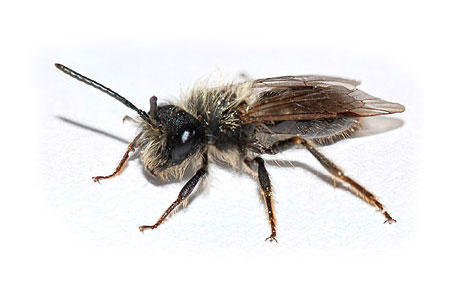
Digger or Ground Bees
- Active in early spring
- Dig nests in the ground similar in appearance to anthills but with larger openings
- Black, yellow and white in color
- Important to pollination
- Not usually aggressive; stings are uncommon
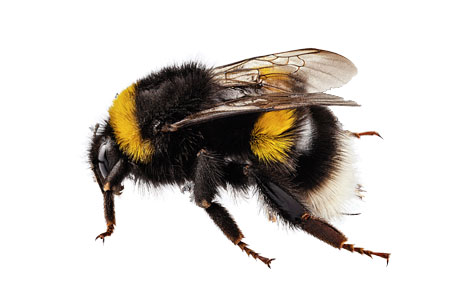
Bumble Bees
- Vary in appearance but are typically plump and densely furry
- Larger and broader than honey bees with a more rounded abdomen tip
- Thick bands of color in an alternating black and yellow pattern
- Important pollinators; not usually aggressive
- In danger of extinction and need to be handled with care
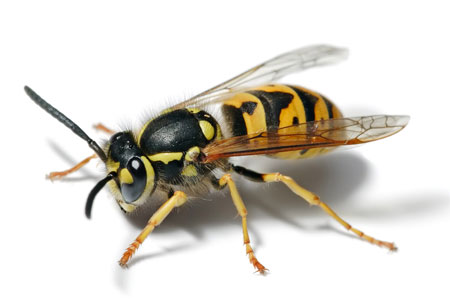
Yellow Jackets
- Often mistaken for bees
- These wasps are roughly 1/2 an inch long
- Black and yellow with alternating white bands on the abdomen (rear half)
- Important predators of pest insects
- Can sting repeatedly and the stinger can become lodged in the skin
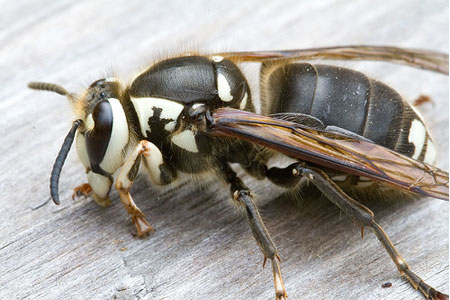
White Faced Hornets
- Also knows as bald-faced hornets
- 1/2 to 5/8 of an inch long
- Long, wasp like body
- Black and white pattern on most of the face
- Will aggressively defend their nest by stinging an invader repeatedly

Cicada Killers
- Large digger wasps
- Range from 1/2 – 2 inches long
- Black to reddish brown with black areas on the thorax and yellow stripes on the rear segments
- Brownish wings
- Not ordinarily aggressive; stings are uncommon
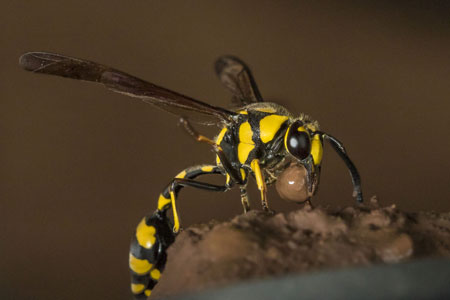
Mud Daubers
- Wasps that build their nests from mud
- Black with bright yellow legs and some yellow on the upper body
- Roughly 1 inch in length
- Long and slender
- Not often aggressive; stings are uncommon
Treat-Protect-Control
There are many ways to address ant control. Sealing off access points and decreasing crumbs and leftover food waste are just a few. We can help design a custom ant control plan designed to deal with any current infestation and prevent future battles from spiraling out of control.
Schedule your in-home assessment now!

YOU WANT BEES,WASPS, AND HORNETS TO STAY OUTSIDE.
So Do We.
It’s Easy To Live
Pest Free
1. Call Us: We offer both phone and in-person evaluations to identify the best course of action to solve your pest problem.
2. Schedule Service: We strive for same day service or at your earliest convenience.
3. Live Pest Free: Our pest prevention plans give our customers the peace of mind that keeps pests out!
Northeast is wonderful…they have someone out as soon as possible to check the situation. They’re diligent, they’re reasonable. The people are friendly and they clean up. I can’t say enough good things about them.
Having a trusted service provider makes things so much easier. I know that they’re going to be there. I know that they are going to show when they are supposed to. I know that they are going to make sure they take care of the problem for me.
I was very impressed with the immediate response/ same day service yesterday. And, Charles was great! Not as pleased today with having to wait until end of the day to empty and reset trap….lots of noise in the attic. But, I understand probably everyone would like that.



